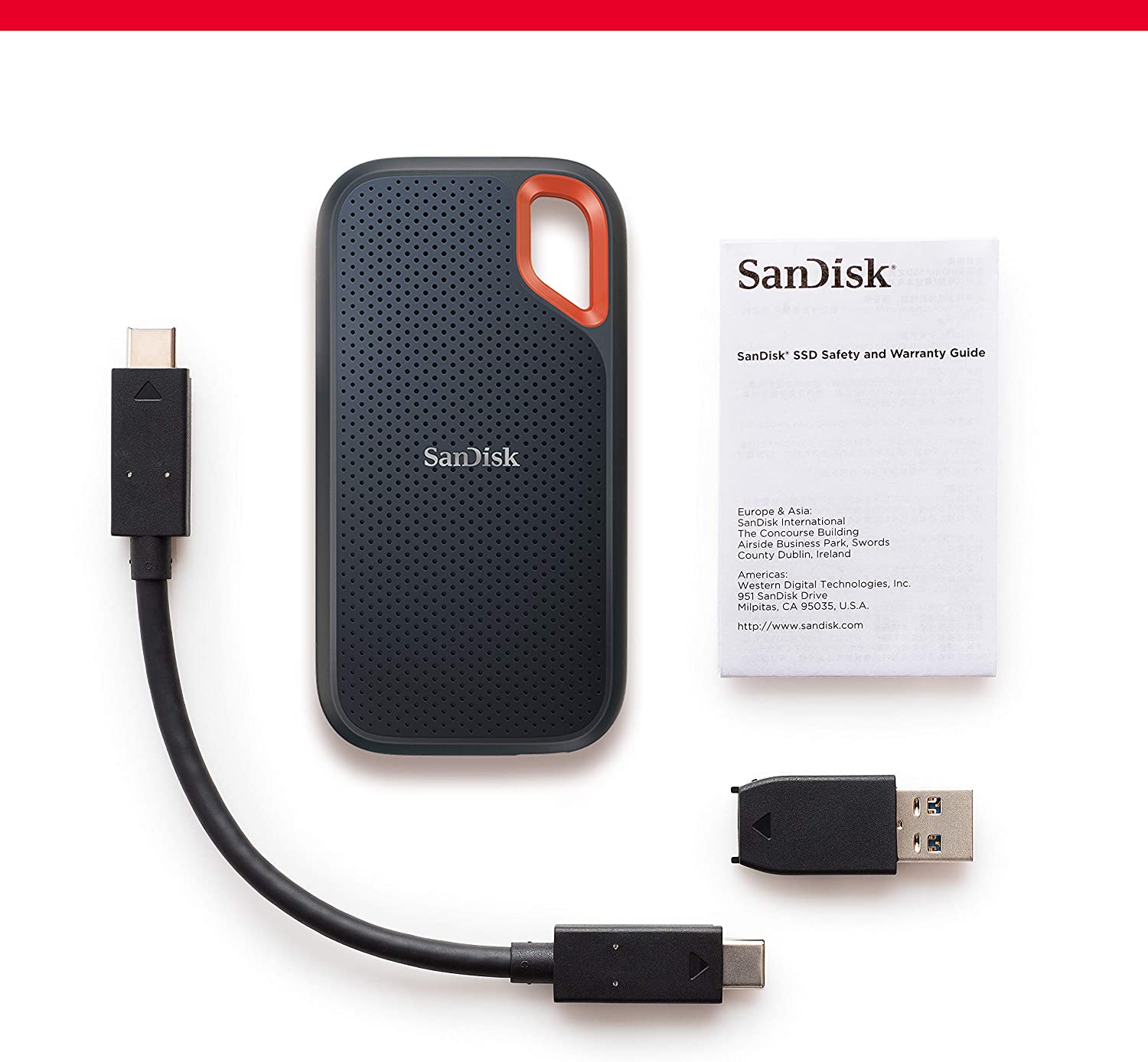Introduction
Solid State Drives (SSDs) have become increasingly popular in recent years, offering faster performance and increased reliability compared to traditional hard disk drives. If you’ve recently purchased an SSD or are planning to upgrade your computer’s storage, you may be wondering how to format it and use it as the C drive. This guide will walk you through the process, from understanding SSDs to formatting and utilizing them as your primary storage.
SSDs are a type of storage device that use flash memory to store data, making them incredibly fast and durable. Unlike mechanical hard drives, SSDs don’t have moving parts, which reduces the risk of mechanical failure and allows for lightning-fast access to your files. As a result, they have become the preferred choice for many computer users who want to enhance their system’s performance and reduce loading times for applications and games.
Formatting an SSD is an essential part of utilizing it as the C drive. When you format a storage device, you prepare it for storing and organizing data. This process removes any existing data on the drive and sets up the necessary file system structure. By formatting your SSD, you ensure that it is ready to be used as the primary storage location for your operating system and applications.
In this guide, we will cover the step-by-step process of formatting an SSD and using it as the C drive. We will also discuss the reasons for formatting an SSD and provide tips for preparing your system before starting the formatting process. So, whether you’re upgrading your existing system or building a new computer, this guide will help you optimize your SSD for maximum performance and efficiency. Let’s dive in and explore the world of formatting SSDs and harnessing their power as your computer’s primary storage solution.
Understanding Solid State Drives (SSDs)
Solid State Drives (SSDs) are a type of storage device that have gained popularity in recent years due to their numerous advantages over traditional hard disk drives (HDDs). To understand how an SSD works, let’s first compare it to an HDD.
Unlike HDDs, which use spinning disks and magnetic heads to read and write data, SSDs use flash memory technology. Flash memory is non-volatile, meaning it retains data even when the power is turned off. This allows SSDs to have faster read and write speeds, as well as improved reliability, since there are no moving parts that can fail.
SSDs are made up of NAND flash memory chips, which store data in memory cells. These cells are organized into pages, and pages are grouped into blocks. When data is written to an SSD, it is stored in the available pages. However, when data is deleted or changed, it cannot be overwritten directly. Instead, the SSD needs to erase the entire block before it can be written to again. This process is known as garbage collection and helps maintain the performance and lifespan of the drive.
One key feature of SSDs is their random access speed, which measures how quickly data can be retrieved from different locations on the drive. Due to their lack of moving parts, SSDs can access data almost instantaneously, resulting in significantly faster boot times and application loading speeds compared to HDDs.
Another advantage of SSDs is their durability. Since there are no moving parts, SSDs are more resistant to shock and vibration, making them ideal for portable devices such as laptops. Additionally, wear-leveling algorithms are implemented in SSDs to evenly distribute write operations across memory cells, preventing certain cells from wearing out faster than others and improving the overall lifespan of the drive.
As SSD technology continues to evolve, the storage capacities of SSDs have also increased. While HDDs still offer larger storage capacities at a lower cost per gigabyte, SSDs are becoming more affordable and offer a balance of capacity, speed, and reliability that makes them a compelling choice for both casual users and professionals.
Understanding how SSDs work and the advantages they bring can help you make informed decisions when it comes to upgrading or purchasing storage for your computer. In the next section, we will explore the reasons why you might want to format an SSD and the benefits it can provide.
Reasons for Formatting an SSD
There are several reasons why you might need to format an SSD before using it as the C drive. Let’s explore some of the most common scenarios where formatting is necessary and the benefits it provides.
1. Preparing a New SSD: If you’ve just purchased a new SSD, it will likely come unformatted or may be formatted with a different file system. Formatting the SSD allows you to set it up with the appropriate file system, such as NTFS for Windows or APFS for macOS, ensuring compatibility with your operating system.
2. Upgrading from an HDD: If you’re upgrading from a traditional hard disk drive (HDD) to an SSD, you’ll need to format the SSD before transferring your operating system or data. This allows you to start fresh with a clean installation of your operating system, taking full advantage of the speed and performance benefits of an SSD.
3. Resolving File System Errors: Over time, file system errors can occur on any storage device, including SSDs. These errors can lead to data corruption or system instability. By formatting the SSD, you can fix any underlying file system issues and ensure that your drive is in optimal condition.
4. Removing Personal Data: If you’re selling, donating, or recycling your old SSD, formatting it is essential to remove any personal or sensitive data. Formatting erases all existing data on the drive, making it unrecoverable by normal means.
5. Optimizing Performance: Formatting an SSD can also help optimize its performance. Over time, as data is written and deleted, the SSD’s performance may degrade. By formatting the drive, you can effectively reset it, allowing for better performance and improved lifespan.
Formatting an SSD is a straightforward process, but it’s crucial to back up any important data before proceeding. Once the formatting is complete, you’ll have a clean slate to work with, ready to install your operating system and start using your SSD as the C drive for improved speed, responsiveness, and overall system performance.
Now that we understand the reasons for formatting an SSD, let’s explore the necessary steps to prepare for the formatting process in the next section.
Preparing for Formatting
Before beginning the process of formatting your SSD, it’s important to take some preparatory steps to ensure a smooth and successful formatting experience. Here are some key considerations to keep in mind:
1. Backup Your Data: Before formatting your SSD, make sure to create a backup of any important files or data that you want to keep. Formatting erases all existing data on the drive, so backing up your files will prevent any potential data loss.
2. Check Hardware Compatibility: Ensure that your computer’s hardware is compatible with the SSD. Check if your motherboard supports the SSD’s interface (SATA, PCIe, etc.) and if you have the necessary cables or connectors to connect the drive.
3. Update Firmware: It’s a good idea to check if there are any firmware updates available for your SSD. Firmware updates can address performance issues, improve compatibility, and provide bug fixes. Visit the manufacturer’s website and follow their instructions to update the SSD’s firmware, if applicable.
4. Gather Installation Media: If you are planning to install or reinstall the operating system on the SSD, make sure you have the necessary installation media, such as a USB drive or DVD, along with the corresponding product key or license information.
5. Remove Unnecessary Data: Prior to formatting, it’s beneficial to eliminate any unnecessary files or applications from your current storage. This will help streamline the formatting process and reduce the amount of data that needs to be transferred or backed up.
6. Disconnect Additional Drives: To avoid accidentally formatting the wrong drive, disconnect any additional drives or external storage devices that are connected to your computer. This will ensure that the formatting process only affects the SSD you intend to format.
By taking these preparatory steps, you can minimize the risk of data loss and ensure that your hardware and software are fully prepared for the formatting process. It’s always better to be prepared than to encounter issues midway through formatting, so investing time in these preparations will save you potential headaches later on.
Now that we have covered the preparatory steps, let’s move on to the actual process of formatting the SSD in the next section.
Formatting the SSD
Once you have completed the necessary preparations, you can proceed with formatting your SSD. Here are the steps involved in formatting an SSD:
1. Accessing Disk Management: On a Windows computer, you can access Disk Management by right-clicking the Start button and selecting “Disk Management” from the context menu. On a Mac, you can access Disk Utility by going to Applications > Utilities > Disk Utility.
2. Selecting the SSD: In Disk Management or Disk Utility, locate your SSD in the list of drives. It may appear as an unallocated or unformatted volume. Ensure that you select the correct drive to avoid accidentally formatting the wrong drive.
3. Initiating the Format: Right-click on the SSD (or use the appropriate menu option in Disk Utility) and select “Format.” Choose the desired file system for your SSD, such as NTFS for Windows or APFS for macOS. You can also assign a new drive letter or name to the SSD if desired.
4. Confirming the Format: A confirmation prompt will appear, warning that formatting will erase all data on the SSD. Double-check that you have backed up any important files, as this step is irreversible. Once you are ready, confirm the format operation.
5. Completing the Format: The formatting process will begin, and it may take some time depending on the size of the SSD. Once the format is complete, you will see the SSD displayed as a formatted drive with the assigned file system.
It is worth noting that some SSDs may come with proprietary software or specific formatting tools provided by the manufacturer. Be sure to consult the instruction manual or the manufacturer’s website for any specific formatting instructions or tools related to your SSD model.
After formatting, your SSD is ready to be used as the C drive. You can now proceed with the installation of your operating system or transferring files to the SSD, depending on your specific needs. Formatting not only prepares the SSD for use but also helps optimize its performance, ensuring a smooth and efficient computing experience.
In the next section, we will explore how to utilize your newly formatted SSD as the C drive and reap the benefits of improved speed and performance.
Using the SSD as the C Drive
Now that you have successfully formatted your SSD, you can use it as the C drive, which is the primary storage location for your operating system and applications. Here are the steps to utilize your SSD as the C drive:
1. Installing the Operating System: If you haven’t already installed the operating system on your formatted SSD, insert the installation media (USB drive or DVD) containing the operating system installation files. Follow the on-screen prompts to install the operating system on your SSD. During the installation process, make sure to select the SSD as the installation destination.
2. Changing Boot Order: To prioritize booting from the SSD, you may need to modify your computer’s BIOS settings. Restart your computer and enter the BIOS by pressing the designated key (usually Del, F2, or F12) during startup. In the BIOS settings, locate the Boot Order or Boot Priority options and set the SSD as the first boot device. Save the changes and exit the BIOS.
3. Transfer Data and Applications: If you previously backed up your data, you can now transfer the files to your newly installed OS on the SSD. This can be done by connecting the backup storage device and copying the files to the appropriate locations on the SSD. Additionally, reinstall any applications that you require on the SSD.
4. Setting Up Storage Optimization: Depending on your operating system, there are built-in features that can help optimize your SSD’s performance. For example, Windows 10 includes features like TRIM, which helps maintain the SSD’s performance by informing it which data blocks are no longer in use. Similarly, macOS has built-in features like Trim Enabler to optimize SSD performance.
5. Regular Maintenance: Regularly maintaining your SSD can help prolong its lifespan and ensure optimal performance. This includes tasks like keeping the drive firmware updated, running regular disk cleanup and defragmentation, and periodically monitoring the SSD’s health using appropriate software.
Using the SSD as the C drive offers numerous benefits, including faster boot times, improved application loading speeds, and overall system responsiveness. The speed and performance advantages of an SSD can greatly enhance your computing experience, saving you time and increasing productivity.
It’s important to note that SSDs have a limited number of write operations before they reach their lifespan. However, modern SSDs are designed to be highly durable, and with regular maintenance and proper usage, they can last for many years. Taking advantage of the benefits of an SSD as the C drive can greatly improve your system’s performance and make your computing experience more enjoyable.
In the next section, we will briefly recap the key points discussed in this guide and conclude our exploration of formatting an SSD for use as the C drive.
Conclusion
In this guide, we have explored the process of formatting an SSD and using it as the C drive in your computer. We began by understanding the basics of Solid State Drives (SSDs), including their advantages over traditional hard disk drives (HDDs), such as faster performance and increased reliability.
We then delved into the reasons for formatting an SSD, which include preparing a new SSD, upgrading from an HDD, resolving file system errors, removing personal data, and optimizing performance. Formatting an SSD is essential to prepare it for use as the primary storage location for your operating system and applications.
In the preparation stage, we discussed the importance of backing up your data, checking hardware compatibility, updating firmware, gathering installation media, removing unnecessary data, and disconnecting additional drives. These preparatory steps ensure a smooth and successful formatting process.
We then walked through the step-by-step process of formatting the SSD, which involves accessing Disk Management or Disk Utility, selecting the SSD, initiating the format, confirming the format, and completing the format. Proper formatting ensures that the SSD is ready for use and optimizes its performance.
Once the SSD is formatted, we discussed how to use it as the C drive. This involves installing the operating system, changing the boot order, transferring data and applications, setting up storage optimization, and performing regular maintenance. Utilizing the SSD as the C drive provides faster boot times, improved application loading speeds, and overall system responsiveness.
It’s important to note that while SSDs have a limited number of write operations, proper maintenance and regular backups can help prolong their lifespan and ensure optimal performance.
By following the steps outlined in this guide, you can confidently format an SSD and harness its power as the C drive, taking full advantage of its speed and performance benefits. Whether you’re upgrading your existing system or building a new one, formatting an SSD will optimize your computer’s performance and enhance your overall computing experience.
So, embrace the capabilities of SSDs, format your drive, and enjoy the speed and efficiency that solid state storage has to offer. Upgrade your computer’s performance today and unlock a whole new level of speed and responsiveness.

























